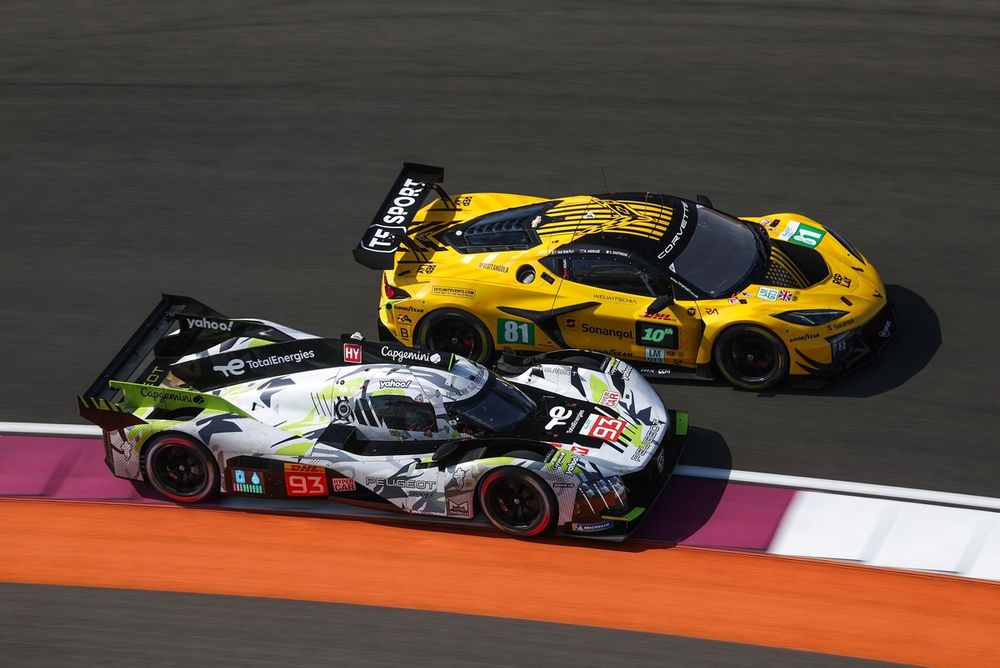WEC introduces new ballast system to compensate for driver weight
The move follows criticism that the championship's lighter drivers enjoyed an unfair advantage

The World Endurance Championship has introduced a new system designed to reduce the advantage of lighter drivers in the series.
What is known as compensation ballast will be applied to cars across the Hypercar and LMGT3 classes from this week’s 2025 season-opener in Qatar.
Its introduction, which has been under discussion since last year, follows criticism that the performance advantage enjoyed by lighter drivers was not mitigated in any way.
A so-called reference weight of 82kg has been set under the new rules, which diverge slightly for qualifying and the race.
In qualifying, both the opening session and Hyperpole, a driver weighing under said figure in full racewear, with the HANS device and seat insert included, must carry ballast.
For the race, an average weight for the driving crew, both three and two driver line-ups, will be calculated and if under 82kg, ballast will have to be carried inside the car in a designated position.
It effectively reintroduces a rule in place in the LMP1 category from 2015 when there was a reference weight of 80kg.

#51 Ferrari AF Corse Ferrari 499P: Alessandro Pier Guidi, James Calado, Antonio Giovinazzi
Photo by: JEP / Motorsport Images
The move has been welcomed across the WEC paddock in the Hypercar class.
Ferrari driver James Calado, who revealed last year that he had been hospitalised in his efforts to lose weight, told Motorsport.com: “This is definitely the right thing to do - it is only right that a world championship has a rule like this.
“If you are giving away 15-20kg or even more, that’s a lot of lap time. It means a heavier driver like me can have the chance to qualify the car, which wasn’t really the case before.”
Marco Sorensen, who has progressed to the Hypercar ranks with Aston Martin for 2025, expressed a similar view.
“It definitely levels the playing field, which has to be a good thing,” he said. “We’ve seen in the past that the drivers chosen to qualify have been the ones who are on the small side. This has to be correct for a high-profile championship.”
Sebastien Bourdais, who has joined the WEC full time with Jota-Cadillac this year, was also supportive. But he pointed out that heavier drivers in a line-up will still be disadvantaged under the new rule.
“The rule is totally legit for qualifying, but the heavier guys are still going to be giving something away to the lightest guy in the crew during the races,” he explained.
“That’s a difficult problem to solve in endurance racing, but this is a step in the right direction.”
The FIA and the Automobile Club de l’Ouest, which jointly write the rules for the WEC, have also revealed the new success handicap system in LMGT3, which replaces the previous success ballast introduced in GTE Am in 2019.
Rather than 15, 10 and 5kg being applied to the top three finishers in class, a percentage reduction in lap time will be applied to the car’s Balance of Performance with revisions to a car’s minimum weight and/or maximum power at the discretion of the FIA and ACO.
The reduction will be 0.24% for a win, 0.16% for a runner-up finish and 0.08% for third.
Share Or Save This Story
Top Comments
Subscribe and access Motorsport.com with your ad-blocker.
From Formula 1 to MotoGP we report straight from the paddock because we love our sport, just like you. In order to keep delivering our expert journalism, our website uses advertising. Still, we want to give you the opportunity to enjoy an ad-free and tracker-free website and to continue using your adblocker.















